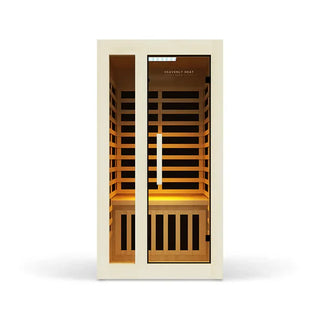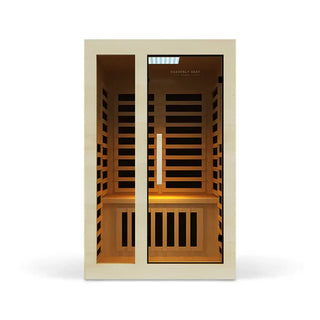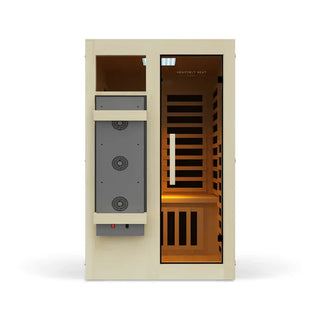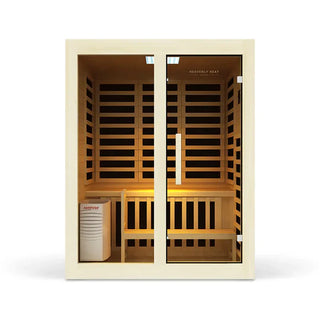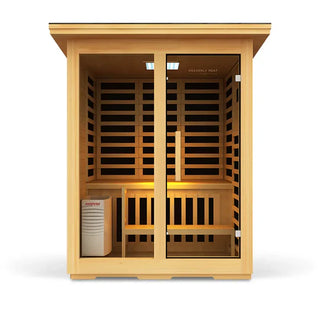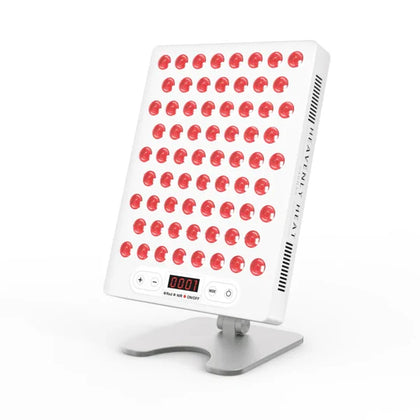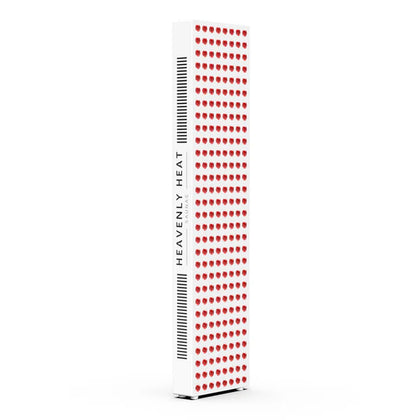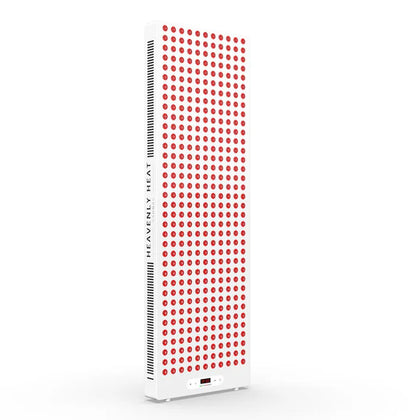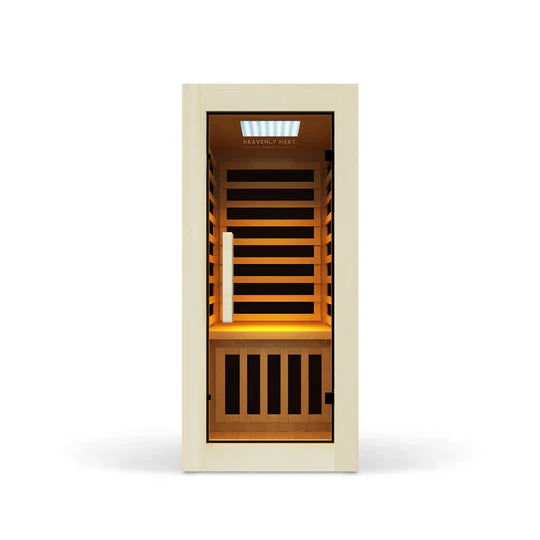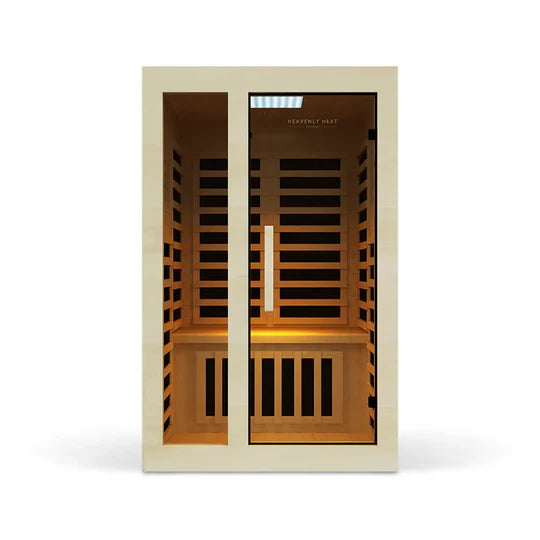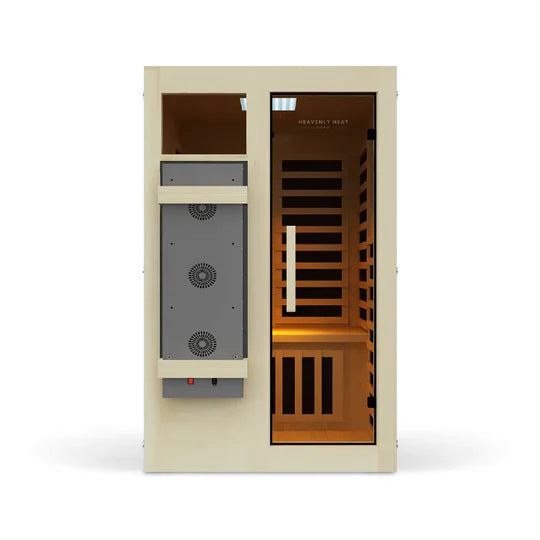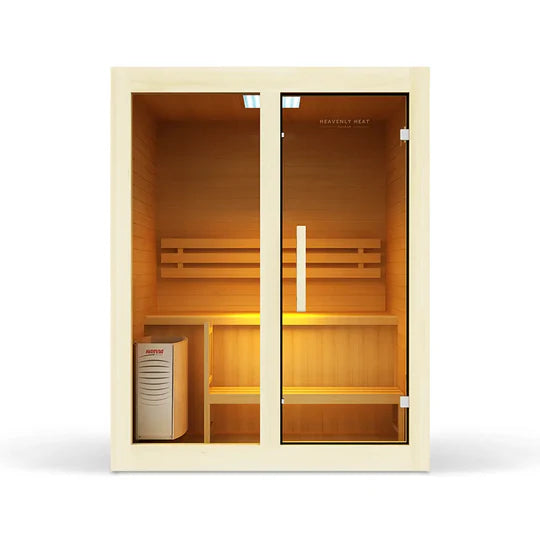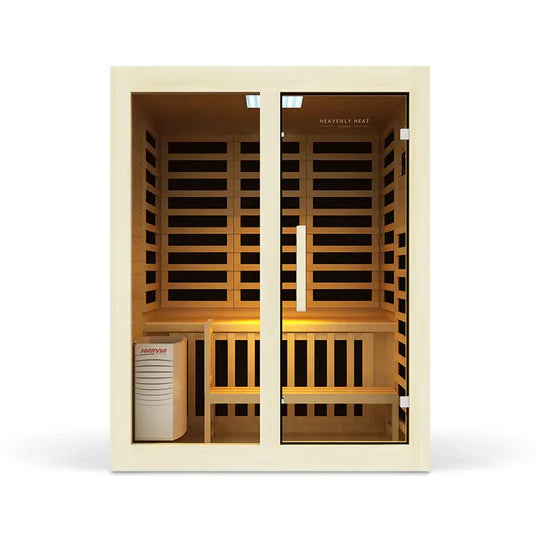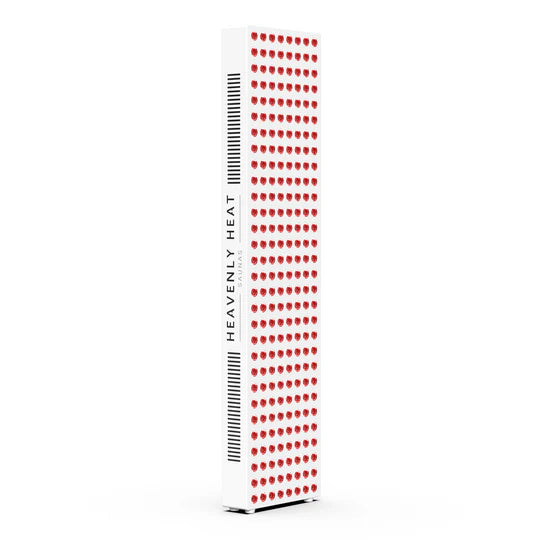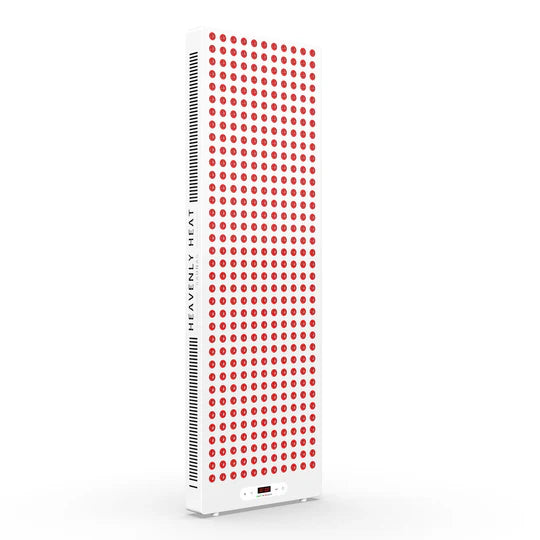How Do You Know If Red Light Therapy is Working?
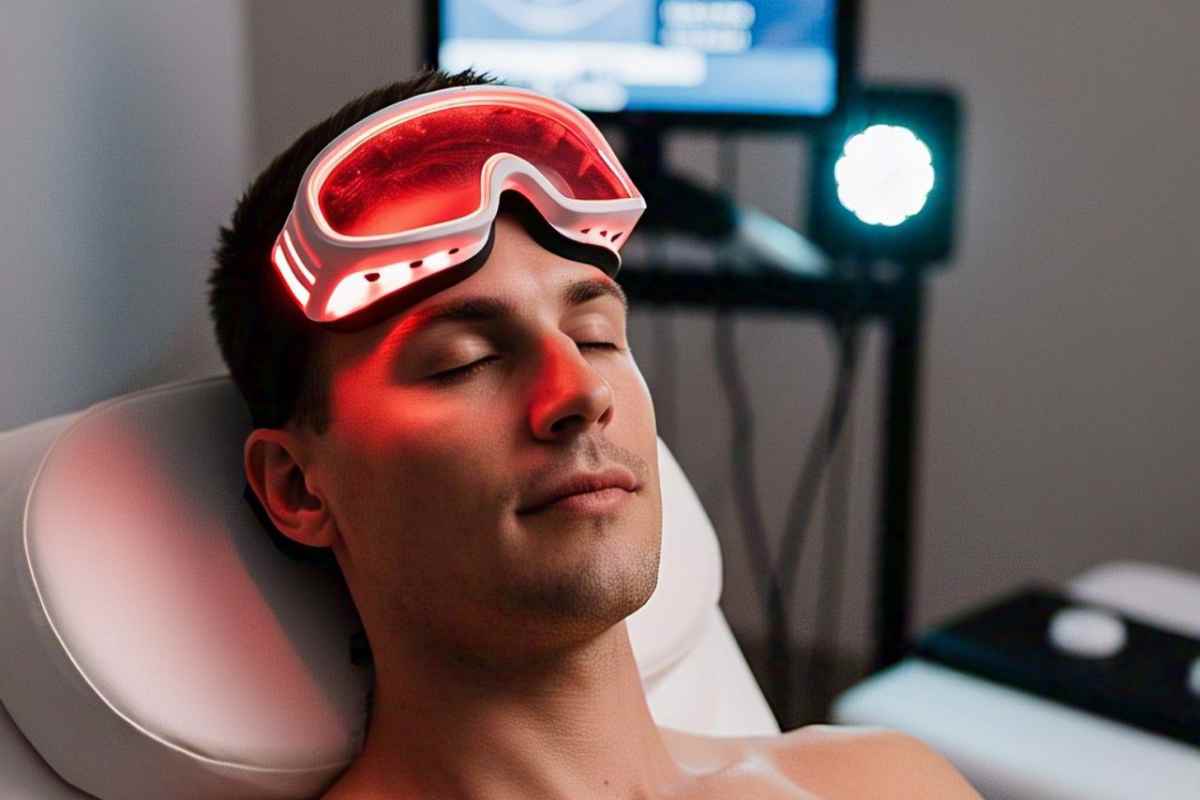
Red light therapy is gaining popularity for its skin, pain relief, and wellness benefits, but how do you know if it is actually working?
Some changes, like smoother skin or better sleep, happen gradually. Tracking your progress is key.
Let’s explore simple ways to measure results and make the most of your therapy sessions.
Key Takeaways
-
Track Your Progress: Take photos, keep a journal, and use symptom trackers to monitor changes over time.
-
Be Patient: Red light therapy shows subtle changes early on, but deeper results may take weeks of consistent use.
-
Focus on Consistency: Regular use (3-5 times per week) is key to seeing improvements in skin, pain, and energy.
-
Adjust Intensity: Ensure the device’s power and wavelength are appropriate for your specific goals.
-
Lifestyle Matters: A healthy diet and proper hydration can enhance the effects of red light therapy.
What Are the Common Applications of Red Light Therapy?
Skin Rejuvenation and Anti-Aging
- Red light is trusted by skin doctors: “There is no doubt that red light can be very, very beneficial to skin," says Dr. Rachel Nazarian , a board-certified dermatologist with over a decade of experience in skin care.
- Red light helps your skin look younger: Red light therapy boosts collagen, which smooths out wrinkles, fine lines, and other signs of aging over time.
- It makes skin firmer and more flexible: By energizing fibroblasts, red light helps your skin make more collagen and elastin, leading to better firmness, bounce, and hydration.
- Some studies show good results, but not all are strong: Research shows red light can smooth wrinkles and improve skin texture, but some studies are small or funded by companies, so results may not be the same for everyone.
- It fades dark spots and repairs sun damage: With regular use, red light therapy helps fade age spots, repair sun damage, and improve uneven skin tone.
- Skin problems are very common around the world: Skin diseases affect nearly 900 million people globally, so treatments that support healthier skin are more important than ever.
- It helps damaged skin heal faster: Red light speeds up how fast your skin repairs itself, so over time you may see smoother, healthier skin after a few weeks of consistent treatment.
Acne Treatment
- Red light reduces the swelling that causes acne: Red light therapy helps calm the redness and puffiness in your skin that leads to acne breakouts, making your face look clearer and less irritated.
- It helps your skin heal and fade acne marks: By supporting the skin’s natural healing process, red light therapy can slowly fade dark spots and scars left behind by acne.
- The 650 nm red light goes deep to fix the problem: This specific type of red light reaches deep into your skin layers, where acne starts, to reduce bacteria and stop breakouts from getting worse.
- It clears acne by working below the surface: Since red light works inside the skin, not just on top, it helps deal with the real causes of acne like bacteria and inflammation.
- It gives quick relief for painful cystic pimples: For deep, painful acne like cysts, red light can ease the pain and help the swelling go down faster, giving you quicker comfort.
- Using it regularly means fewer breakouts over time: When used consistently, many people notice their acne becomes less frequent and their skin looks healthier and smoother overall.

Wound Healing and Scar Reduction
- Red light helps wounds heal faster by improving blood flow: Red light therapy increases circulation, which brings more oxygen and nutrients to the area. This speeds up the healing process and helps the skin recover more quickly.
- Damaged skin repairs itself quicker with red light therapy: By boosting cell activity, red light helps the body rebuild tissue. This means wounds close faster, and there’s less chance of long-term damage.
- Scars become less visible as red light boosts collagen: When used regularly, red light therapy encourages collagen production. This makes scar tissue softer, smoother, and less noticeable, especially helpful after surgery.
- Red light reduces swelling so wounds can heal better: Inflammation can slow down healing. Red light calms the area around the wound, helping your body repair without as much irritation or redness.
- Using red light regularly supports both healing and recovery: Doing sessions a few times a week, for 10–30 minutes, not only helps with healing cuts and scars, it also eases sore muscles by reducing inflammation and speeding up recovery.
Muscle Recovery and Performance
- Red light helps your muscles bounce back faster: Red light therapy supports your body in healing muscle damage quicker after tough workouts, so you feel less sore and recover sooner.
- It gives your cells more energy to repair muscles: By boosting the energy inside your muscle cells, red light helps your body fix itself faster after physical activity.
- It calms down muscle swelling and speeds up healing: Red light therapy reduces inflammation in your muscles, which means less pain and faster recovery between training sessions.
- Regular use helps you train harder and longer: Using red light therapy often can build muscle endurance over time, helping you push through workouts with better results.

Joint Pain and Inflammation Relief
- Red light therapy helps ease joint pain like arthritis: Red light therapy is widely used to relieve joint pain, especially for people dealing with arthritis . It doesn’t just cover the pain, it goes deeper to treat what’s causing it.
- It brings down joint swelling and helps you move better: When your joints are inflamed, it’s harder to move. This therapy reduces that swelling, making movement easier and less painful over time.
- Better blood flow means less pain and stiffness: By boosting blood circulation around the joints, red light therapy helps reduce stiffness and pain naturally. This improved flow helps your joints work better.
- It’s a gentle option for knee pain and sore joints: If you have knee pain, stiffness, or sore joints, red light therapy is a simple, non-invasive way to feel better, without surgery or heavy medications.
- Older adults often feel the biggest difference: Many people over 50 deal with joint pain or arthritis. Red light therapy gives them a practical way to reduce discomfort and improve daily movement.
- The more regularly you use it, the better it works: Using red light therapy consistently often leads to long-term relief. People who stick with it tend to feel less pain and move more freely over time.
Hair Growth Stimulation
- Red light helps your hair roots wake up and grow: One of the most exciting applications of red light therapy is for hair growth. It stimulates the hair follicles and improves circulation to the scalp, which helps in slowing down or even reversing hair thinning.
- It makes your scalp healthier so more hair can grow: The therapy promotes cell regeneration in the scalp, creating a better environment that supports new hair growth.
- It can work for different types of hair loss, not just one: While it’s particularly effective for androgenetic alopecia, red light therapy also shows promising results for other types of hair loss like alopecia areata and telogen effluvium.
- You may start seeing hair come back in a few months: Though results can vary, most people begin to see noticeable regrowth within 12 to 26 weeks of consistent use as the therapy gradually helps bring life back to weak hair follicles.
- It not only grows new hair but also makes your current hair stronger: If you're experiencing balding or thinning hair, red light therapy can help by strengthening your current strands and encouraging the development of new ones. Regular sessions are essential for the best results.
Improved Sleep and Mood
- Red light makes it easier to fall asleep: Red light therapy helps your body produce melatonin, which tells your brain it’s time to rest. This makes falling asleep feel more natural and less of a struggle.
- It’s a natural way to fix insomnia and jet lag: If you have trouble sleeping or your schedule is off because of travel, red light therapy can help reset your body clock without using pills.
- People with odd sleep schedules sleep better with it: Shift workers or those with unusual routines can get deeper, longer sleep using red light therapy. It helps create a more stable sleep pattern .
- Red light can lift your mood and ease anxiety: Regular use of red light therapy reduces feelings of depression and anxiety. It gently supports emotional balance without needing medication.
- Morning light gives energy, evening light brings calm: Using red light in the morning helps you feel more alert and focused. At night, it helps you relax and wind down for better rest.
- It supports both better sleep and a clearer mind: By keeping your sleep and mood in sync, red light therapy helps you feel more emotionally steady and mentally sharp throughout the day.
How Can Red Light Therapy Benefit Your Body?
- Red light therapy helps you feel more energetic every day: It works by waking up the power centers in your cells (mitochondria), so your body feels more active, alert, and less tired.
- It gives real relief for people who always feel tired: If you struggle with constant fatigue, red light therapy boosts ATP, the fuel your body runs on, giving you natural, lasting energy without stimulants.
- It reduces pain and swelling in joints and muscles: This therapy calms inflammation, making it easier to move and helping relieve common aches in joints and muscles .
- It helps your body recover faster after injuries or workouts: Whether you’re sore from exercise or healing from an injury, red light therapy speeds up recovery and reduces stiffness so you can bounce back quicker.
- It builds stronger muscles and supports endurance: By helping muscles repair faster, it boosts your strength and keeps you going longer during physical activity.
- It improves blood flow and keeps your body working better: Red light therapy increases circulation and oxygen flow, which helps your body stay healthy, strong, and well-balanced overall.
How Do You Know If Red Light Therapy is Working?
- You’ll start to feel less pain and your skin will look better: The first signs usually include smoother skin , reduced pain, and a slight boost in energy.
- Your skin may start to glow after just a few sessions: Some people notice a glow in their skin within a few sessions, especially when they stick with the routine.
- Bigger changes like healing and recovery take more time: Deeper improvements, such as collagen production or muscle recovery, often take weeks to show up.
- The light doesn’t hurt – it just feels warm: You won’t feel much during a session, maybe just a bit of gentle warmth on your skin.
- Taking photos or notes helps you see the difference: To keep track of what’s improving, take photos or write down changes in pain, sleep, or skin texture.
- Your body starts healing itself from the inside: Red light helps by improving blood flow and helping your cells repair themselves naturally.
- You need to keep going regularly to see real results: How well it works depends on your goal, but staying consistent is the most important part. Be patient, results will come.

How Long Does It Take to See Results From Red Light Therapy?
- Some changes can show up just after a few sessions: You might notice early signs like a healthy glow to your skin or less tension in your muscles within the first few uses.
- Bigger improvements take a few weeks of regular use: Things like smoother skin, less pain, or more hair growth usually need weeks of consistent therapy to really show up.
- Doing it 3 to 5 times a week gives better results: Most people start seeing clear changes only after using red light therapy several times a week for about a month.
- Your results depend on your body and lifestyle: Everyone is different, your skin type, age, habits, and overall health all play a role in how fast you see results.
- Sticking to the right timing makes a big difference: How often and how long you use red light therapy matters, a proper routine helps you get results faster and avoid overdoing it.
- The benefits can stay with you even after stopping: If you use it regularly, the good effects don’t just disappear right away, they can last for weeks or even months afterward.
How to Track Red Light Therapy Progress at Home?
Take Before-and-After Photos
- Taking photos is the easiest way to see your progress: Before-and-after photos help you notice changes that are hard to see day by day. They give you clear proof of how your skin, muscles, or overall health is improving with red light therapy.
- Using the same light and angle makes photos more accurate: Your progress is easier to track when every photo is taken in the same lighting, from the same distance and angle. This removes guesswork and shows real changes.
- Natural lighting helps show real results: Try to use natural daylight for your photos. It gives a more honest look at your skin and body, without shadows or filters changing the appearance.
- Skipping the masks helps the light do its job: Avoid wearing reflective or opaque masks in your photos. These can block the red light and hide the real changes happening under your skin.
- Taking photos every few weeks shows slow and steady progress: Don’t wait for big changes, take new photos every few weeks. It helps you notice even the small improvements that add up over time.
- Small changes add up if you stay patient and consistent: If progress seems slow, don’t give up. Red light therapy works gradually. Staying consistent with your routine will eventually show visible results.
Keep a Therapy Journal
A therapy journal is a great way to track how you're feeling after each session. Write down any changes you notice, like reduced pain or improvements in skin health.
Recording specific details such as how long your sessions are, any discomfort, and how you felt during and after can help you see patterns.
Over time, you'll be able to adjust your routine if needed. If you're tracking pain levels, note how much relief you feel after each session.
Use a Symptom Tracker
- Using a tracker helps you notice changes you might miss: A symptom tracker is a simple way to keep an eye on how your body responds to red light therapy. It takes the guesswork out and helps you stay aware of small changes.
- Tracking the exact problem shows if therapy is working: Focus on the symptoms you’re trying to fix, like pain, stiffness, or swelling. This makes it easier to see if the therapy is helping the right issue.
- Writing updates often makes progress clearer: By noting changes every day or week, you’ll start to see patterns. This shows whether the therapy is slowly making things better or staying the same.
- Noting side effects helps you avoid unwanted reactions: If you feel anything unusual, like tiredness or skin changes, track those too. This helps you stay safe and adjust things if needed.
- Watching your notes helps you improve your sessions: Looking back at what you’ve tracked helps you understand what’s working best. This way, you can change your sessions to get better results.
Monitor Sleep Patterns
- Using a Sleep App Helps You See Real Changes: Red light therapy can improve how well you sleep. To keep track of this, it’s a good idea to use a sleep app or a wearable device that records your sleep habits.
- Watching Sleep Time and Rest Quality Shows Progress: Keep an eye on how long you sleep, how fast you fall asleep, and how rested you feel the next morning. These details help you understand if red light therapy is making a difference.
- Small Sleep Improvements Often Show Up Early: Many people notice small changes within a few days or weeks, like falling asleep faster or waking up feeling more refreshed.
- Looking at Sleep Data Before and After Makes It Clear: By comparing your sleep before starting red light therapy with how you sleep after a few sessions, you’ll start to notice patterns and improvements.
- Writing Down Sleep Changes Makes Tracking Easy: Keeping a simple record of things like waking up less at night or feeling better in the morning will help you see how well the therapy is working for you.
Track Energy and Mood Levels
- Tracking your energy and mood shows what’s changing: When you pay attention to how you feel before and after each session, you start to notice how red light therapy is really affecting your daily energy and mood.
- Rating how you feel helps you spot patterns: Taking just a moment to rate your energy and mood after each session can show you what’s working. Over days and weeks, small changes turn into clear patterns.
- Feeling better is linked to brain chemicals: Red light therapy may help your brain release serotonin and dopamine, which naturally boost your mood and energy, especially helpful if you struggle with low mood or anxiety.
- Writing things down helps you see real progress: Whether you use a notebook or a phone app, tracking makes the changes visible. You’ll be able to look back and see how far you’ve come.
- Keeping track helps you improve your routine: When you see what works best for your energy and mood, you can adjust your timing or session length to get even better results.
Log Skin Health Improvements
If you're using red light therapy to improve your skin, keeping track of your skin’s condition is key.
Pay attention to specific indicators like reduced acne, wrinkles, or scars. Photographs can be very helpful for documenting visible improvements over time.
Write down any changes you notice in texture, tone, or elasticity. A regular log can help you determine how effective the therapy is.
Use Wearables or Apps
- Wearables help you track time and light properly: Wearable devices like smartwatches or fitness trackers can show how long you're using red light and how strong the light is during each session. This makes sure you're not overdoing it or missing out.
- Real-time feedback keeps you on the right path: Some wearables give instant feedback, showing how your session is going. This helps you stay focused and gives a small boost of motivation to keep going.
- Therapy becomes easier when apps remind you: Special red light therapy apps can send alerts if your session is too short or too long. They help you stick to the right routine without having to remember everything yourself.
- Keeping a session log helps improve your results: By using apps or wearables to save each session, you can look back and see what’s working best. This makes it easier to adjust your routine for better progress over time.
FAQs
How can I differentiate between the initial discomfort of red light therapy and actual side effects?
Red light therapy can cause mild sensations like warmth, tingling, or temporary redness, which are normal and usually fade within a few hours. Severe redness, burning, or persistent pain, however, may indicate a negative reaction. Discomfort can result from improper use, excessive exposure, being too close to the light, or lack of skin protection. Blistering or ongoing irritation signals a problem.
Can the effectiveness of red light therapy vary depending on the wavelength of light used?
Red light therapy effectiveness varies based on wavelength. Wavelengths around 630-660nm are used for skin rejuvenation and surface issues, while 850nm penetrates deeper, aiding muscle recovery and joint pain. The intensity also affects results, with higher intensity potentially providing faster outcomes. It's essential to choose the right wavelength for your specific needs.
How do I know if my red light therapy device is delivering the right intensity for desired results?
When using red light therapy, check the manufacturer’s specifications for power density to ensure proper intensity. If the intensity feels too weak or strong, adjust the distance and usage time. Aim for a balance, too little light won’t yield results, while too much can irritate the skin. Consistency is key.
Can my diet or lifestyle impact how well red light therapy works?
Your diet and lifestyle can impact the effectiveness of red light therapy. Eating nutrient-rich foods, especially those high in antioxidants, can enhance its effects, while a poor diet may slow healing. Staying hydrated is important, as dehydration can reduce efficiency. Smoking can hinder healing by damaging tissues and affecting circulation. A healthy lifestyle supports better results.



